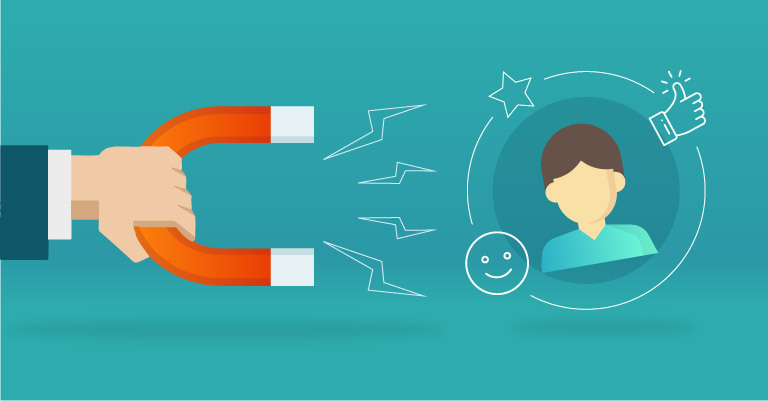Enhanced Customer Retention Strategies through Customer Segmentation
MARKETING


Customer retention is the lifeblood of any business. It's far more cost-effective to keep existing customers than to acquire new ones. But in a world where customers have more choices than ever before, how do you ensure they stay loyal to your brand? The answer lies in customer segmentation.
Understanding Customer Retention
Before we delve into the role of customer segmentation, it's crucial to understand the concept of customer retention. Customer retention is the practice of keeping existing customers engaged with your brand, encouraging repeat purchases, and fostering long-term loyalty.
Retention matters for several reasons:
Cost-Effective: Acquiring new customers can be five times more expensive than retaining existing ones.
Higher Spending: Existing customers tend to spend more over time as their trust in your brand grows.
Word-of-Mouth: Loyal customers are more likely to refer friends and family, acting as brand advocates.
Stability: A strong base of loyal customers provides a stable revenue stream, even during market fluctuations.
Data Source: Existing customers provide valuable data on preferences and behavior.
The Power of Customer Segmentation in Retention
Now, let's explore how customer segmentation plays a pivotal role in enhancing customer retention strategies.
1. Identifying High-Value Segments
Customer segmentation allows you to identify high-value segments within your customer base. These are the customers who consistently make large purchases, engage with your brand, and are more likely to become long-term patrons.
By recognizing and prioritizing these segments, you can tailor retention strategies specifically for them. This might include offering exclusive benefits, loyalty programs, or personalized recommendations.
2. Personalized Communication
One-size-fits-all communication rarely resonates with all customers. Customer segmentation enables you to create personalized communication strategies based on the preferences and behavior of each segment.
For example, a segment of tech-savvy, young professionals might prefer receiving updates through social media and mobile apps, while an older segment may prefer email newsletters or direct mail. Personalizing your communication increases engagement and builds stronger relationships.
3. Tailored Incentives and Offers
Different customer segments have varying motivations and triggers for making purchases. By understanding these nuances through segmentation, you can design tailored incentives and offers.
For instance, you might offer discounts to price-sensitive segments, early access to new products for your loyal customers, and bundle deals for segments that prefer value packages.
4. Predictive Analytics for Churn Prevention
Predictive analytics, a powerful tool within customer segmentation, helps in identifying customers at risk of churning (i.e., leaving your brand). By analyzing past behavior and comparing it to current activity, predictive analytics can flag customers who exhibit signs of disengagement.
Once identified, you can proactively reach out to these customers with targeted retention efforts. This could be in the form of special offers, personalized recommendations, or simply checking in to address any concerns.
5. Feedback and Improvement
Segmentation isn't just about keeping your best customers engaged; it's also about identifying areas for improvement. Segments that show lower engagement or frequent churn can be a source of valuable feedback.
For example, if a particular segment tends to churn after a single purchase, it might indicate issues with the post-purchase experience or product quality. Addressing these concerns can not only retain more customers in that segment but also prevent issues from affecting other segments.
Case Study: Starbucks Rewards Program
One excellent real-world example of customer segmentation driving customer retention is Starbucks and its Rewards program. Starbucks segments its customers based on purchase history, frequency, and preferences. The Rewards program offers personalized rewards and incentives to different segments.
For instance, a frequent visitor might receive a free coffee after every ten purchases, while a lapsed customer might receive a discount offer to encourage a return visit. This level of personalization keeps customers engaged and loyal.
Implementing Customer Segmentation for Enhanced Retention
Now that we understand the importance, how can businesses effectively implement customer segmentation for enhanced customer retention?
Data Collection: Start by collecting as much relevant data as possible. This includes transaction history, website activity, email interactions, and even customer feedback.
Segmentation Criteria: Define the criteria for segmentation. This could be demographics, behavior, purchase frequency, or any combination that makes sense for your business.
Choose the Right Tools: Invest in analytics tools and software that can handle the complexity of segmentation and predictive analytics. Many customer relationship management (CRM) systems offer these capabilities.
Analysis and Segmentation: Use your chosen tools to analyze the data and segment your customer base. Don't be afraid to create multiple segments to cater to various customer needs.
Personalization Strategies: Develop personalized communication and marketing strategies for each segment. Ensure that your messaging, incentives, and offers align with the preferences and behavior of each group.
Regular Evaluation: Continuously monitor the effectiveness of your retention strategies. Use analytics to measure customer engagement, churn rates, and the success of your personalized efforts.
Feedback Loop: Establish a feedback loop to gather insights from each segment. Customer surveys and feedback mechanisms can provide valuable information for further refinement.
Conclusion
Enhancing customer retention through customer segmentation isn't just a strategy; it's a necessity in today's competitive business landscape. By understanding your customers on a deeper level, tailoring your communication and incentives, and using predictive analytics to prevent churn, you can build lasting relationships and foster brand loyalty.
Remember, customer segmentation is not a one-time task; it's an ongoing process of refinement and adaptation to changing customer behaviors and preferences. When done right, it's a win-win for both businesses and their customers.
